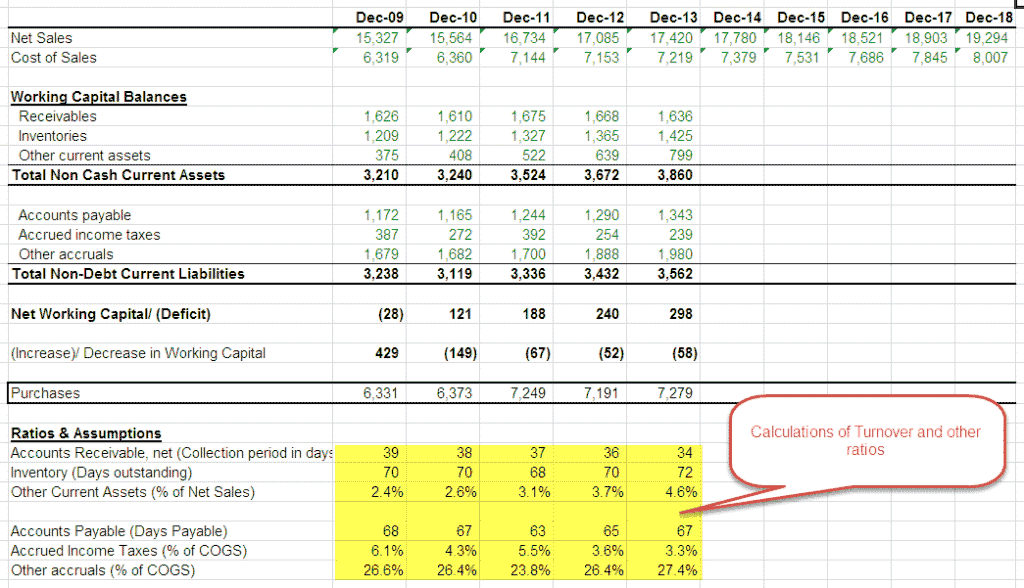
Whatever its size, the amount of working capital sheds very little light on the quality of a company’s liquidity position. Gross Working Capital is the capital invested in the total Current Assets of the enterprise. The existing relationship between sales and working capital is identified for one or two years.
Futures Markets: Functions, Participants
Forecasting the balance sheet helps businesses with financial planning and capital management. With the right financial software, businesses can conduct risk assessments, evaluate performance, enhance decision-making, and meet compliance requirements. To avoid this, companies should regularly review their balance sheets, verify the accuracy of the data, and make corrections if necessary. By doing so, they can rely on their balance sheets to provide an accurate picture of their financial health and make informed decisions. These methods are not mutually exclusive and are often used in combination to provide a more comprehensive and accurate estimate of a company’s future working capital needs.
Receivables
Inaccurate balance sheets can misrepresent a company’s financial position and cause serious problems. The profit and loss account (P & L A/c) or income and expenditure statement shows the profitability of the firm by giving details about revenue and expenses, during a period of time and measures its profitability. While effective working capital management can help a company avoid financial difficulties, it may not necessarily lead to increased profitability. Working capital management does not inherently increase profitability, make products more desirable, or increase a company’s market position. Understanding your businesses value through financial modelling and valuation is key to unlocking your growth potential.

How Forecasting Balance Sheets Helps Businesses
ValuAnalytics can benchmark your company’s historical and forecasted financial results against your publicly-traded competitors. Below are some thoughts that you should consider to assess the reasonableness of the projected figures. The forecast working capital first is a debt-to-EBITDA ratio, which measures the proportion of total debt to a company’s EBITDA. Banks often incorporate a debt-to-EBITDA target within debt covenants, so this metric can be a helpful sanity check to your assumptions.
Balance Sheet Forecasting Guide
Before you estimate future cash balances, check with your appraiser to ensure that this information is required. The definition used in a valuation will depend on several factors, including the nature of the business and the purpose of the valuation. Ask your appraiser what is needed to complete the analysis before you spend time projecting out cash or debt balances. Deloitte’s PrecisionView solution combines data science, machine learning, and advanced visualization to help companies along their advanced analytics journey. Whether your organization is new to analytics or has a solid foundation in place, PrecisionView can help unlock advanced insight generation, predictive models, and cognitive capabilities.
Your insurance premium could be a big lump upfront, once each year, and your staff bonuses a big lump in arrears once a year. Make sure your model helps you see them coming and when the business should expect peaks and troughs in its cash balance. Another financial metric, the current ratio, measures the ratio of current assets to current liabilities. Unlike working capital, it uses different accounts in its calculation and reports the relationship as a percentage rather than a dollar amount. For example, if a company has $100,000 in current assets and $30,000 in current liabilities, it has $70,000 of working capital.
You can also apply growth rates for assets and liabilities that do not behave consistently with changes in revenues or expenses. In Figures 19 and 20, we present an example for the projection of other current assets and liabilities. Many clients stop their forecasting efforts at the income statements and never get into forecasting the balance sheet at all. In these cases, we have developed forecasts (on the clients’ behalf) for the key balance sheet items needed to calculate free cash flow. Forecasting the balance sheet from net zero is an approach used on accounts with significant fluctuations, like accounts payable.
- With our hybrid forecasting and advanced analytics solution, companies can forecast cash at a monthly level of detail for four to six quarters.
- If this cannot be completed quickly, the company may be forced to have its short-term resources stuck in an illiquid position.
- Lack of visibility into details can hamper the flexibility to create different scenarios, which is critical to navigating a path forward.
- It provides a measurement of a company’s ability to pay its ongoing interest expense obligations with its current income.
- It provides information about the company’s ability to generate profits from its operations and can help investors evaluate the company’s profitability.
Net working capital is a measure of short-term financial health and is basically the difference between your current assets and liabilities. You want the difference to be positive (meaning you have more current assets than liabilities). It’s also useful for understanding how your profit & loss and cash flow statements will impact your debt levels in the future. Typically, the main balance sheet section of a model will either have its own dedicated worksheet or it will be part of a larger worksheet containing other financial statements and schedules. Before we dive into individual line items, here are some balance sheet best practices.



